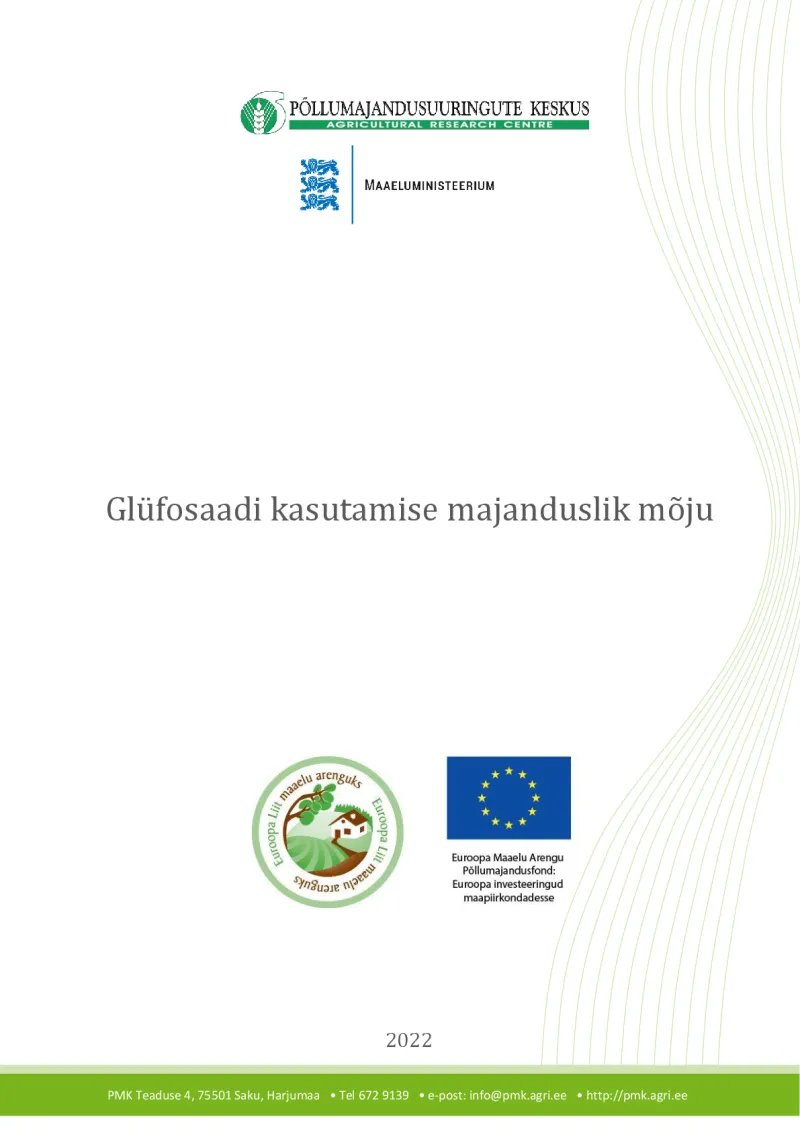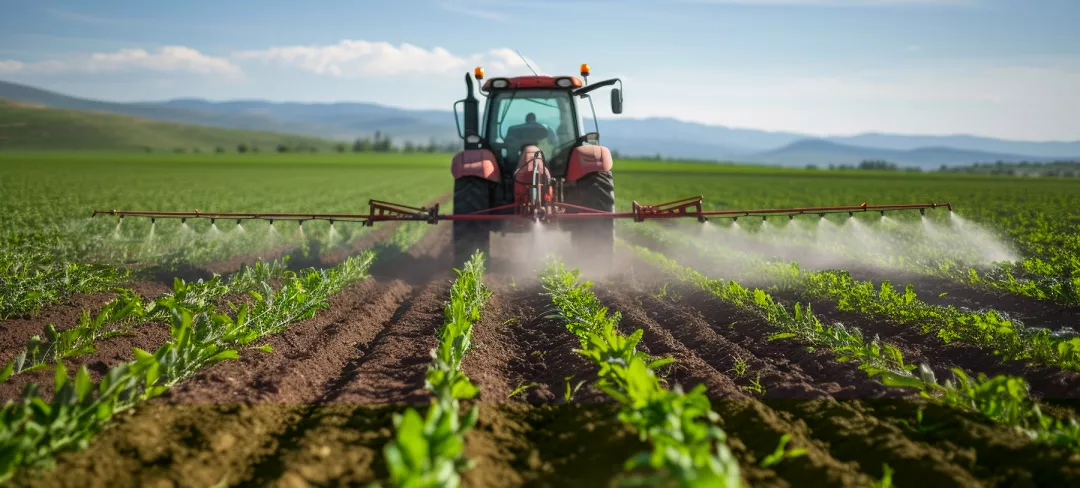The economic effect of the use of glyphosate
- Evaluation
- Environment
- Agricultural Productivity
- Climate and Climate Change
- Evaluation
- Economic impacts
The study aims to describe changes in the costs and gross income of growing cereals, oil crops, vegetables, and fodder crops under a 5-field recommended crop rotation.
- Estonia
- Programming period: 2014-2022
- Socio-economic impacts


Like many other Member States, Estonia has already imposed restrictions on the use of pesticides that contain glyphosate. Rural Development Programme (RDP) support measures have contributed to the limitation of glyphosate use during the previous funding period (2014–2020 RDP), such as environmentally friendly management (EFM) and environmentally friendly fruit and berry cultivation.
The purpose of the study is to describe changes in the costs and gross income of growing cereals, oil crops, vegetables, and fodder crops under a 5-field recommended crop rotation.
The study made comparisons regarding the expenses of agricultural enterprises using different crop cultivation technologies and production types to provide a basis for determining the appropriate compensation for producers who do not use glyphosate-containing herbicides on their farms. The target group of the study consists of conventional agricultural producers operating in Estonia.
The methodological approach for the evaluation used surveys, comparison groups and modelling.
Various data sources and specialised literature were used to conduct the study, like statistical data from Statistics Estonia, costs of machine work for different technologies, data from the Plant Protection Products Register, FADN data, 2021 gross margin calculations in plant production and animal husbandry, price surveys, fertilisation recommendations and clarification of norms. In addition, trial data and price lists of companies marketing agricultural inputs were analysed in crop cultivation.
For the gross margin calculations, the values were based on total crop production over a five-year average yield (2017-2021) for agricultural enterprises engaged in conventional farming practices, as recorded in the Estonian FADN database.
In the crop rotation model for the type of plant cultivation, widely grown cereal crops in Estonia were selected. The crop rotation also fulfils the requirements for winter cover crops specified for the RDP agri-environmental basic payment scheme (EFM support scheme).
One of the study's limitations is related to the costs that apply to 2021. In 2022, the preliminary survey indicates a significant increase in input and machinery costs for crop cultivation. Prices for product realisation have also changed. Consequently, the cost considerations for 2022 differ from those of 2021 to a certain extent.
The analysis of the economic effect of glyphosate use concluded that in crop rotations of plant and animal husbandry production types, the margin significantly depended on the employed crop rotation where comparable variants had equal yields (i.e. using glyphosate, not using glyphosate, not using herbicides).
It was found that in the crop rotation of the plant production type, where cereals and winter rapeseed were grown, the highest gross margin (averaging EUR 133 per hectare (€/ha)) was achieved when weed control was largely based on glyphosate. This allowed for more cost-effective shallow soil tillage. The gross margin of the variant 'using glyphosate' was higher than 'not using glyphosate' and 'not using herbicides', respectively, 31 and 39€/ha (or 30% and 41%). Therefore, in a crop rotation where crop diversity is based on the cultivation of cereals and rapeseed, discarding glyphosate may lead to a significant decrease in gross margin.
For plant production types, soil tillage costs were higher when using no glyphosate to some extent. When not using herbicides, it significantly affects the cost of machinery works as the average of crop rotation. Those not using herbicides have machine work expenses of 79€/ha higher compared to glyphosate users
In animal husbandry production, where no herbicides were used on two fields of meadow fescue, no-tillage was performed during the growth of meadow fescue. Fields of cereals and rapeseed were mostly cultivated using ploughing. The highest and practically equal gross margins were obtained when not using herbicides (158€/ha average ) and using glyphosate (157€/ha average). The gross margins of the variants 'does not use herbicides' and 'uses glyphosate' exceeded the gross margins of 'does not use glyphosate' by an average of 25% in crop rotation. When refraining from using glyphosate, it was often necessary to use one more expensive herbicide for weed control.
In vegetable cultivation without herbicides, it was necessary to significantly increase both machine and manual labour. This means that, in addition to the usual ploughing and cultivation for pre-sowing tillage, an extra operation was performed. During the growing season, the frequency of inter-row cultivation needed to be increased at least twice. Also, without herbicides, manual weeding requires at least double the time compared to using chemical weed control agents. Without herbicides (compared to using glyphosate), the gross margin for the calculated variant would be, on average, 165€/ha lower.
Author(s)
Members of the working group: Karli Sepp, Livi Rooma, Kristine Tiirats, Helle Persitski, Marju Aamisepp, Eduard Matveev, Agnes Naarits